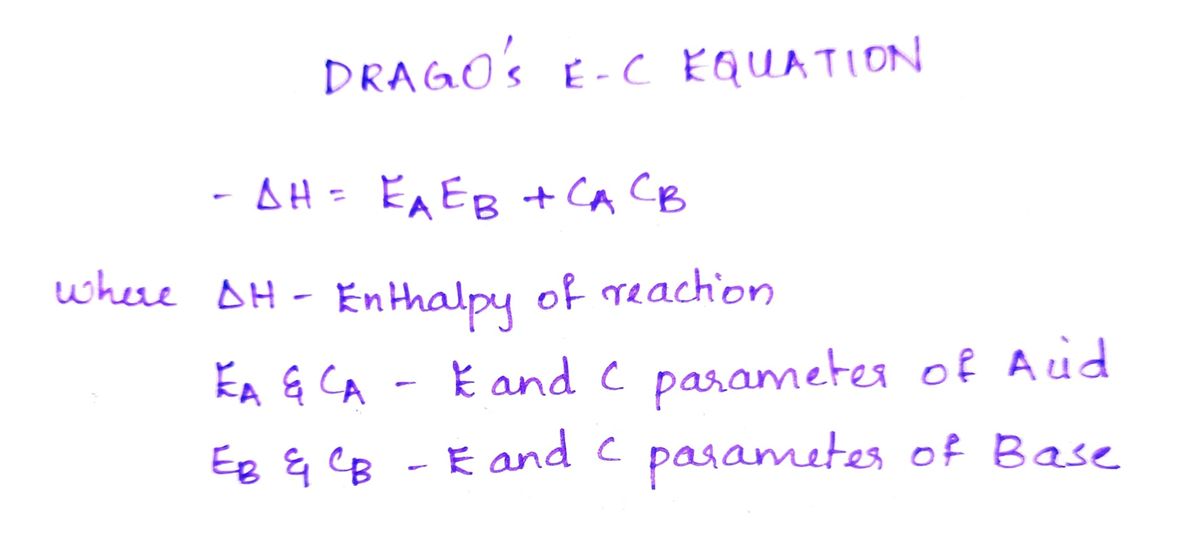Use Drago’s E and C parameters to calculate ΔH for the reactions of NH3 and BF3 and of NH3 and B(CH3)3. Compare your results with the reported experimental values of −71.1 and −64 kJ/mol for NH3—B(CH3)3 and −105 kJ/mol for NH3—BF3. use NH3 as the base, and put the four reactions in order of the magnitudes of their ΔH values.
Use Drago’s E and C parameters to calculate ΔH for the reactions of NH3 and BF3 and of NH3 and B(CH3)3. Compare your results with the reported experimental values of −71.1 and −64 kJ/mol for NH3—B(CH3)3 and −105 kJ/mol for NH3—BF3. use NH3 as the base, and put the four reactions in order of the magnitudes of their ΔH values.
Organic Chemistry
8th Edition
ISBN:9781305580350
Author:William H. Brown, Brent L. Iverson, Eric Anslyn, Christopher S. Foote
Publisher:William H. Brown, Brent L. Iverson, Eric Anslyn, Christopher S. Foote
Chapter4: Acids And Bases
Section: Chapter Questions
Problem 4.30P: Will acetylene react with sodium hydride according to the following equation to form a salt and...
Related questions
Question
Use Drago’s E and C parameters to calculate ΔH for the reactions of NH3 and BF3 and of NH3 and B(CH3)3. Compare your results with the reported experimental values of −71.1 and −64 kJ/mol for NH3—B(CH3)3 and −105 kJ/mol for NH3—BF3.
use NH3 as the base, and put the four reactions in order of the magnitudes of their ΔH values.
Expert Solution
Step 1
The Drago's equation helps us to calculate the enthalpy and thereby the bond strength of acid- base or donor-acceptor interactions. It use two parameters which are empirically obtained i.e. E which describes electrostatic interaction and C for covalent interaction.

Trending now
This is a popular solution!
Step by step
Solved in 2 steps with 2 images

Knowledge Booster
Learn more about
Need a deep-dive on the concept behind this application? Look no further. Learn more about this topic, chemistry and related others by exploring similar questions and additional content below.Recommended textbooks for you

Organic Chemistry
Chemistry
ISBN:
9781305580350
Author:
William H. Brown, Brent L. Iverson, Eric Anslyn, Christopher S. Foote
Publisher:
Cengage Learning

Chemistry: The Molecular Science
Chemistry
ISBN:
9781285199047
Author:
John W. Moore, Conrad L. Stanitski
Publisher:
Cengage Learning

Organic Chemistry
Chemistry
ISBN:
9781305580350
Author:
William H. Brown, Brent L. Iverson, Eric Anslyn, Christopher S. Foote
Publisher:
Cengage Learning

Chemistry: The Molecular Science
Chemistry
ISBN:
9781285199047
Author:
John W. Moore, Conrad L. Stanitski
Publisher:
Cengage Learning